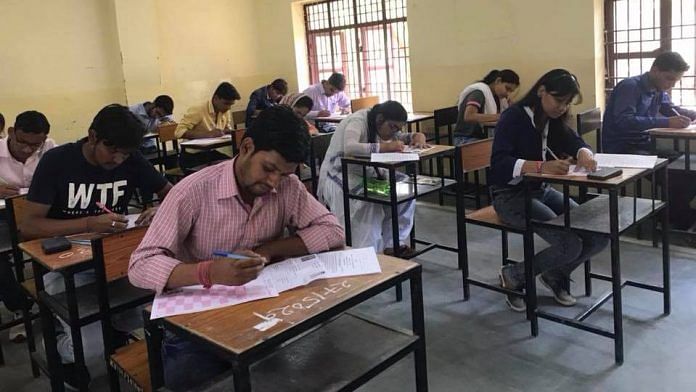New Delhi: Students writing the Class 12 Central Board of Secondary Education (CBSE) Mathematics exam this year are making models, drawings, graphs on cardboards to prove equations and theorems as part of their first practical assessment in the subject.
After the board announced last year that all subjects will have a practical component, schools have begun the assessment in Mathematics among the science subjects from this year. Subjects like Physics, Chemistry and Biology already have practical components but Maths practicals are the latest addition.
The CBSE has allotted schools time from 7 January to 7 February to finish internal assessments and practicals. The practicals have to be conducted by schools internally and the scores have to be uploaded on the central CBSE server.
While some schools have already had their practicals, some are still finishing up with the internal assessment.
“Mathematics did not have any practical component in it so far and this made it easy for students to score more in the subject. This is why the board has decided to include practicals in the exam,” a senior CBSE official told ThePrint.
The practical component carries 20 marks, while theory has 80 marks. Of the 20 for practical assessment, 10 marks will be allotted for the internal assessment, which is based on projects and other work done by students throughout the year, and 10 marks will be allotted for the on-spot lab practical exam.
Also read: Ambedkar Navodayas, scholarships — Modi govt eyes education sector for Dalit outreach
The new Maths practical exam
The practical exam will consist of an activity, a viva, which is an oral examination, and a work file. For Mathematics, it will be similar to how students have been assessed so far in Physics, Chemistry and Biology.
There are 27 activities listed in the CBSE manual, prepared by the National Council for Educational Research and Training (NCERT) for Maths practicals, and schools can choose to teach any 10 of them to students during the school session.
The examiner at the practical will be allowed to ask the student to perform any one of the 10 activities they have been taught.
The activities include making graphs, charts and models based on theorems, perform calculations based on them and write the observations.
One such activity is “to verify that amongst all the rectangles of the same perimeter, the square has the maximum area”. Students are asked to make rectangles of different dimensions — length and breadth — with the help of cardboards and prove that a square has the maximum area.
Schools have been asked to have a Maths lab for the activities, but those that don’t will accommodate students in the Physics labs for the practical exams.
“We got done with the practical exams on Monday. We gave an activity to students at the lab and assessed them on its basis,” said Kanishka Verma, a school teacher at a private school in Kanpur.
“A practical exam in Maths is a new thing but activities are not new. We have been making students perform activities from the NCERT prescribed manual for quite some time now, so they were in a way, prepared for it.”
The theory exams for both Class 10 and 12 will start from 15 February and end by 30 March.
Not just Class 12, the Class 10 board will also see changes from this year. Students in Class 10 will have two types of question papers in Mathematics, including an easy one for those who do not want to pursue Maths after Class 10 and a more difficult one, for those who want to take up the subject in future.
Also read: Cognitive skills of 4-year-olds at anganwadis lower than private school counterparts: ASER



